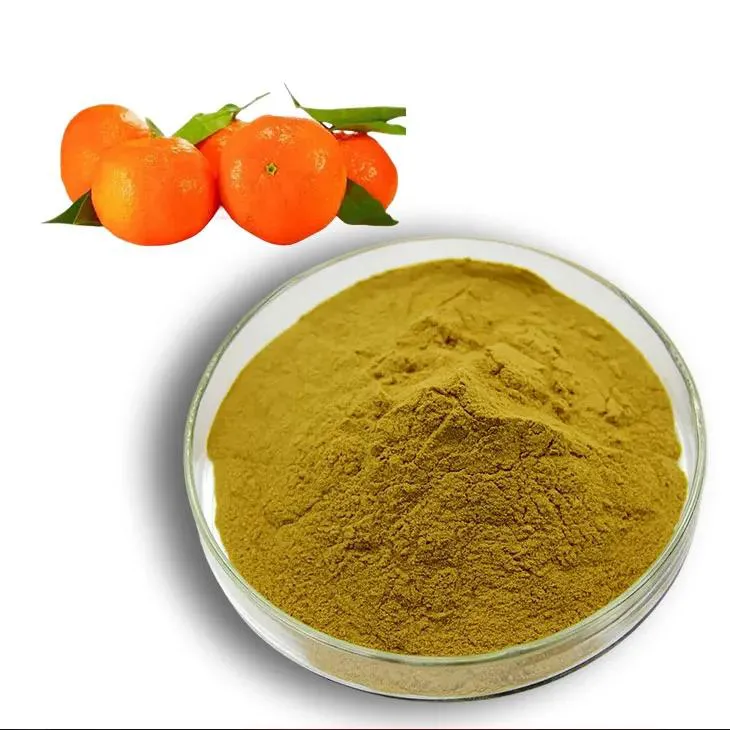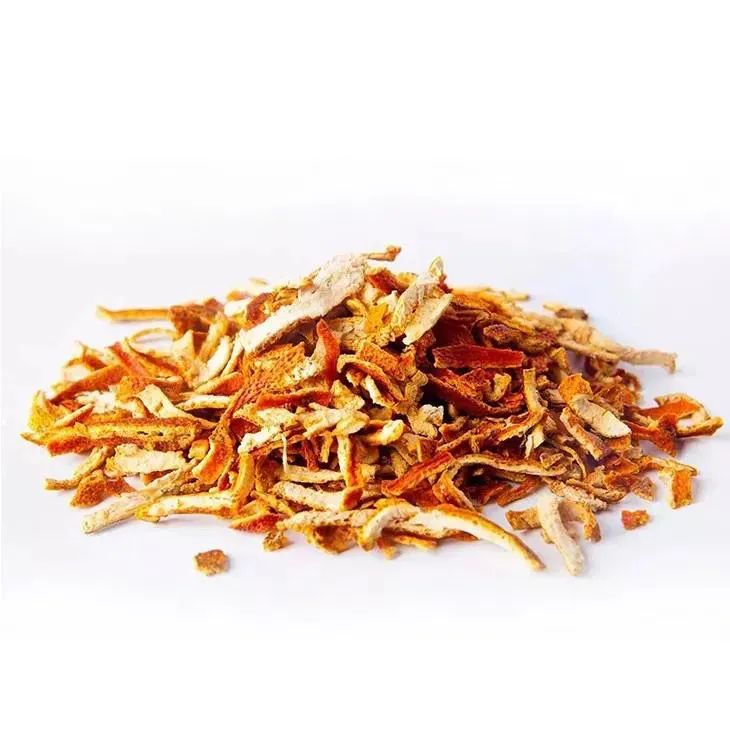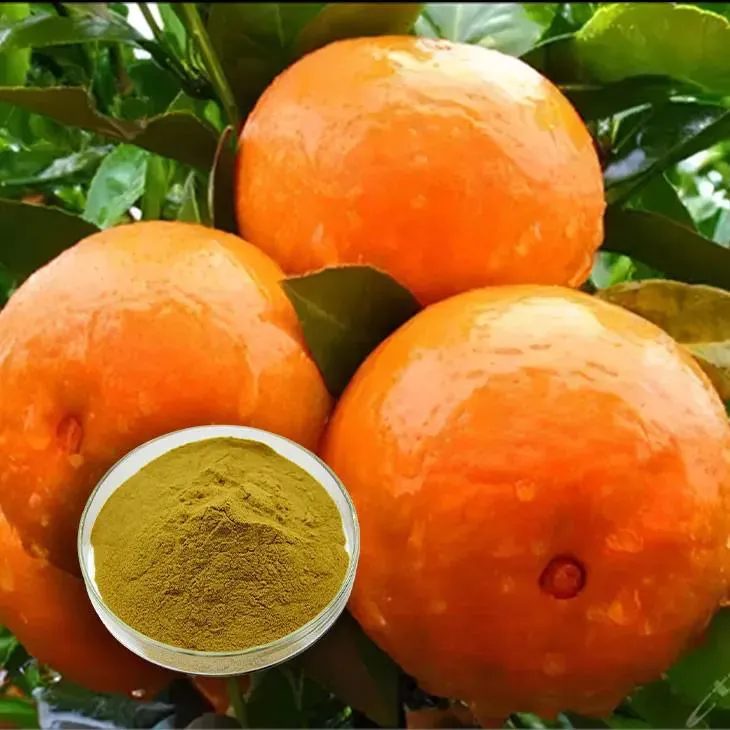- 0086-571-85302990
- sales@greenskybio.com
The process of extracting citrus flavonoids from citrus bioflavonoids.
2024-11-29

1. Introduction
Citrus fruits are rich sources of bioflavonoids, which are a group of polyphenolic compounds. Citrus flavonoids, a subset of these bioflavonoids, have attracted significant attention due to their numerous health - promoting properties such as antioxidant, anti - inflammatory, and anti - cancer activities. The extraction of citrus flavonoids from Citrus bioflavonoids is a crucial step in their isolation for various applications in the food, pharmaceutical, and cosmetic industries.

2. Extraction Methods
2.1 Solvent Extraction
Solvent extraction is one of the most common methods for extracting citrus flavonoids.
- Selection of solvents: Ethanol and methanol are frequently used solvents. Ethanol is preferred in many cases due to its relatively low toxicity and wide availability. Water - ethanol mixtures can also be used to improve the extraction efficiency. For example, a mixture of 70% ethanol and 30% water has been shown to effectively extract flavonoids from citrus peels.
- Extraction process: The citrus material (peels, pulp, etc.) is first ground into a fine powder. Then, it is mixed with the selected solvent in a suitable ratio. The mixture is typically stirred or shaken for a certain period, usually several hours to overnight, at a controlled temperature, often room temperature or slightly elevated temperature (around 40 - 50°C). After extraction, the mixture is filtered to separate the liquid extract containing the flavonoids from the solid residue.
2.2 Supercritical Fluid Extraction (SFE)
Supercritical fluid extraction is a more advanced extraction technique.
- Principle: Supercritical fluids, such as carbon dioxide (CO₂), possess properties between those of a gas and a liquid. In the supercritical state, CO₂ has a high diffusivity and low viscosity, which allows it to penetrate the matrix of the citrus material and extract the flavonoids more efficiently. It also has the advantage of being a non - toxic and environmentally friendly solvent.
- Extraction conditions: The extraction is carried out under specific conditions of pressure and temperature. For CO₂ - based SFE, the pressure is usually in the range of 10 - 40 MPa, and the temperature is around 35 - 60°C. The citrus material is placed in an extraction vessel, and supercritical CO₂ is passed through it. The flavonoids are dissolved in the supercritical CO₂, and then the pressure is reduced in a separation vessel to precipitate the flavonoids.
2.3 Microwave - Assisted Extraction (MAE)
Microwave - assisted extraction utilizes microwave energy to enhance the extraction process.
- Mechanism: Microwaves cause the polar molecules in the citrus material and the solvent to vibrate rapidly, generating heat. This internal heating promotes the release of flavonoids from the matrix. It can significantly reduce the extraction time compared to traditional solvent extraction methods.
- Procedure: The citrus sample and the solvent are placed in a microwave - transparent container. The extraction is carried out at a specific microwave power level (usually in the range of 100 - 600 W) for a short period, typically a few minutes to half an hour. After extraction, the mixture is cooled and filtered to obtain the flavonoid - rich extract.

3. Factors Affecting Extraction Efficiency
3.1 Particle Size of Citrus Material
The particle size of the citrus material plays an important role in extraction efficiency.
- Smaller particle sizes increase the surface area available for solvent interaction. For example, when citrus peels are ground into a fine powder rather than used in large pieces, the solvent can more easily penetrate and extract the flavonoids. However, if the particle size is too small, it may lead to problems such as clogging during filtration.
3.2 Solvent - to - Material Ratio
- The ratio of solvent to citrus material affects the extraction efficiency. A higher solvent - to - material ratio generally results in better extraction, as there is more solvent available to dissolve the flavonoids. However, using an excessive amount of solvent may not be cost - effective and may also require more energy for solvent recovery. For instance, in solvent extraction, a ratio of 10:1 (solvent to material) may be a good starting point, but this may need to be optimized depending on the specific citrus variety and the extraction method.
3.3 Extraction Time and Temperature
- Extraction time: Longer extraction times can increase the amount of flavonoids extracted up to a certain point. However, after a certain time, the extraction may reach a saturation point, and further increasing the time may not significantly improve the yield. In solvent extraction, extraction times can range from a few hours to overnight, while in microwave - assisted extraction, it may be only a few minutes to half an hour.
- Extraction temperature: Higher temperatures can increase the solubility of flavonoids in the solvent and the rate of diffusion, thus enhancing the extraction efficiency. But excessive temperatures may cause degradation of the flavonoids. For example, in solvent extraction, temperatures above 70 - 80°C may start to degrade some heat - sensitive flavonoids.

4. Quality Control of the Final Products
4.1 Purity Analysis
- High - performance liquid chromatography (HPLC): HPLC is a commonly used method for analyzing the purity of citrus flavonoid extracts. It can separate and quantify the different flavonoid components present in the extract. By comparing the chromatogram of the extract with that of pure standards, the purity and composition of the extract can be determined.
- Thin - layer chromatography (TLC): TLC is a simpler and more cost - effective method for a preliminary assessment of purity. It can separate the flavonoids based on their different affinities for the stationary and mobile phases. However, it has lower resolution compared to HPLC.
4.2 Identification of Flavonoid Compounds
- Spectroscopic methods: Ultraviolet - visible (UV - Vis) spectroscopy can be used to identify the presence of flavonoids based on their characteristic absorption spectra in the UV - Vis region. Infrared (IR) spectroscopy can provide information about the functional groups present in the flavonoid molecules. Nuclear magnetic resonance (NMR) spectroscopy is a more powerful tool for determining the structure of flavonoid compounds, providing detailed information about the chemical environment of atoms in the molecules.
- Mass spectrometry (MS): MS can be used to determine the molecular weight of flavonoid compounds and their fragmentation patterns, which are useful for identifying the specific flavonoids present in the extract.
4.3 Assessing the Biological Activity
- Antioxidant activity assays: Citrus flavonoids are known for their antioxidant properties. Assays such as the 2,2 - diphenyl - 1 - picrylhydrazyl (DPPH) radical scavenging assay and the ferric - reducing antioxidant power (FRAP) assay can be used to evaluate the antioxidant activity of the flavonoid extracts. These assays measure the ability of the extracts to scavenge free radicals or reduce oxidized species.
- Anti - inflammatory assays: To assess the anti - inflammatory activity of citrus flavonoid extracts, in vitro assays such as the inhibition of nitric oxide (NO) production in lipopolysaccharide (LPS) - stimulated macrophages can be used. In vivo assays in animal models can also be carried out to study the anti - inflammatory effects in a more complex biological system.
5. Conclusion
The extraction of citrus flavonoids from Citrus bioflavonoids is a complex process that involves choosing the appropriate extraction method, considering various factors affecting extraction efficiency, and implementing strict quality control measures for the final products. With the increasing demand for natural products with health - promoting properties, further research on improving extraction techniques and ensuring product quality is necessary. By optimizing the extraction process, it is possible to obtain high - quality citrus flavonoid extracts with potential applications in multiple industries.
FAQ:
Question 1: What are the common extraction methods for citrus flavonoids from Citrus bioflavonoids?
There are several common extraction methods. One is solvent extraction, which often uses organic solvents like ethanol or methanol to dissolve the flavonoids from the bioflavonoid source. Another method is supercritical fluid extraction, typically using supercritical carbon dioxide. This method has the advantages of being more environmentally friendly and can often provide higher - quality extracts. Additionally, microwave - assisted extraction can also be used. It utilizes microwave energy to enhance the extraction efficiency by accelerating the mass transfer process within the sample.
Question 2: How do temperature and extraction time affect the extraction efficiency of citrus flavonoids?
Temperature plays a crucial role. Generally, an appropriate increase in temperature can enhance the solubility of flavonoids, thus increasing the extraction efficiency. However, if the temperature is too high, it may lead to the degradation of flavonoids. Regarding extraction time, a longer extraction time may initially lead to an increase in the amount of extracted flavonoids. But after a certain point, the extraction may reach a saturation state, and further increasing the time may not significantly improve the yield. Moreover, a very long extraction time may also cause some side reactions that could affect the quality of the flavonoids.
Question 3: What are the main factors to consider for quality control of the final citrus flavonoid products?
For quality control, purity is a key factor. The final product should be free from contaminants such as pesticides, heavy metals, and other impurities. The content of flavonoids needs to be accurately determined, which can be done through methods like high - performance liquid chromatography (HPLC). The stability of the flavonoids also needs to be ensured. Packaging under appropriate conditions, such as in a light - resistant and air - tight container, can help maintain their stability. Additionally, the bioactivity of the flavonoids should be tested to ensure that they possess the expected antioxidant, anti - inflammatory, or other beneficial properties.
Question 4: Are there any specific solvents that are most suitable for extracting citrus flavonoids?
Ethanol is a very commonly used solvent for extracting citrus flavonoids. It has a good solubility for flavonoids and is relatively safe and easy to handle. Methanol can also be used, but it is more toxic. Some researchers also explore the use of aqueous - organic solvent mixtures, such as a combination of water and ethanol. These mixtures can sometimes offer better selectivity and extraction efficiency compared to pure solvents, as they can adjust the polarity to better match the properties of the flavonoids.
Question 5: How can we ensure the safety of the extraction process of citrus flavonoids?
To ensure safety, first, when using solvents, proper ventilation should be provided in the extraction environment to prevent the accumulation of solvent vapors, especially for toxic solvents like methanol. Workers should wear appropriate protective equipment, such as gloves and masks. The extraction equipment should be regularly maintained to ensure that there are no leaks. Also, strict compliance with safety regulations during the entire extraction process, from sample preparation to final product collection, is essential. Additionally, for food - grade or pharmaceutical - grade flavonoid extraction, all materials and processes should meet the relevant safety and quality standards.
Related literature
- Optimization of Citrus Flavonoid Extraction: A Review"
- "The Role of Citrus Flavonoids in Health and the Latest Advances in Their Extraction"
- "Citrus Bioflavonoids: Extraction, Characterization, and Application"
- ▶ Hesperidin
- ▶ Citrus Bioflavonoids
- ▶ Plant Extract
- ▶ lycopene
- ▶ Diosmin
- ▶ Grape seed extract
- ▶ Sea buckthorn Juice Powder
- ▶ Fruit Juice Powder
- ▶ Hops Extract
- ▶ Artichoke Extract
- ▶ Mushroom extract
- ▶ Astaxanthin
- ▶ Green Tea Extract
- ▶ Curcumin
- ▶ Horse Chestnut Extract
- ▶ Other Product
- ▶ Boswellia Serrata Extract
- ▶ Resveratrol
- ▶ Marigold Extract
- ▶ Grape Leaf Extract
- ▶ New Product
- ▶ Aminolevulinic acid
- ▶ Cranberry Extract
- ▶ Red Yeast Rice
- ▶ Red Wine Extract
-
Saffron Extract Powder
2024-11-29
-
Plantain extract
2024-11-29
-
Resveratrol extract
2024-11-29
-
Yohimbine Bark Extract
2024-11-29
-
Peppermint Oil
2024-11-29
-
White mustard seed extract
2024-11-29
-
Sophora Japonica Flower Extract
2024-11-29
-
Artichoke Extract
2024-11-29
-
Dandelion Root Extract
2024-11-29
-
Propolis Extract Powder
2024-11-29





















